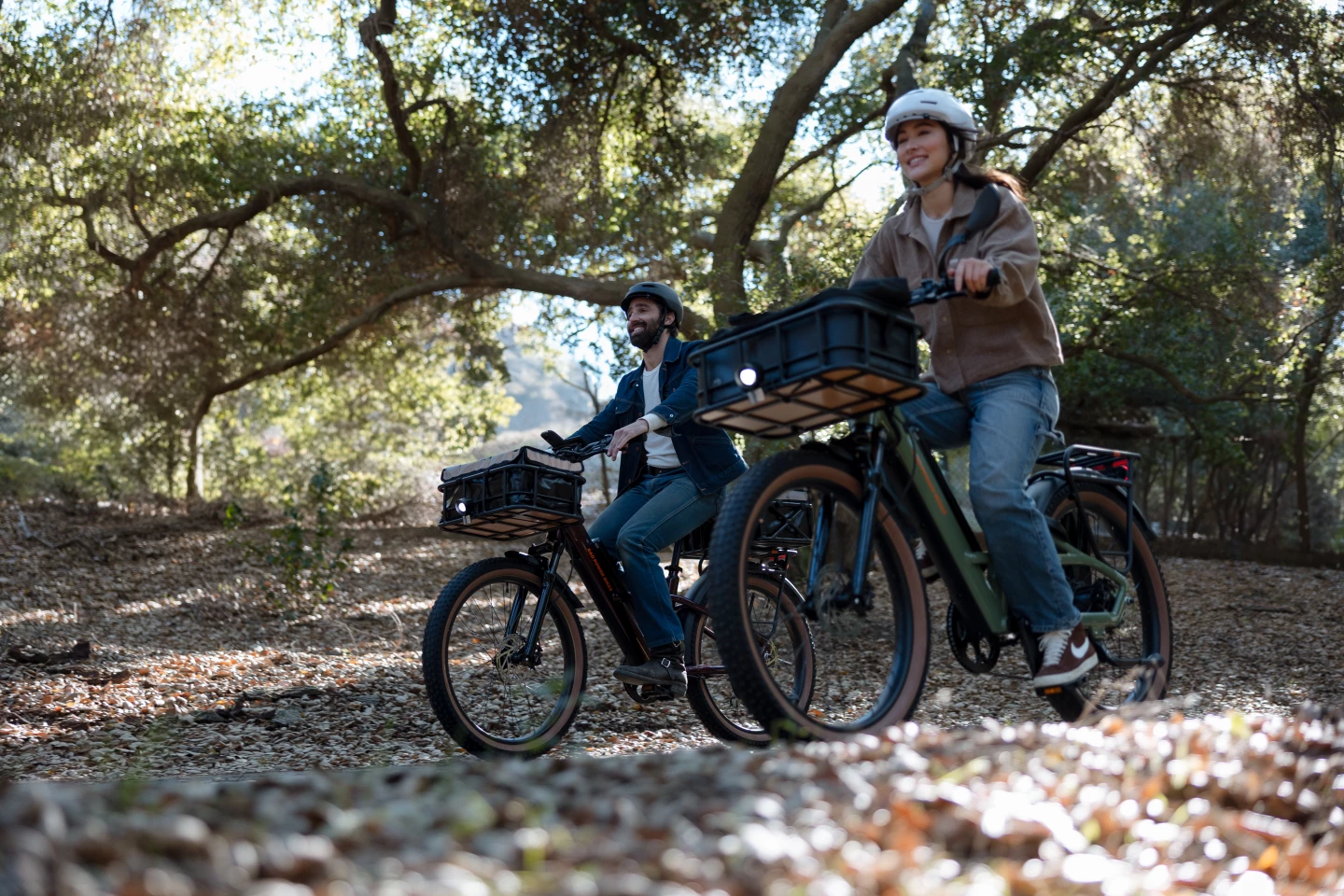Rad Power Bikes already ensures that all of its models meet UL safety standards, but has now gone further with the introduction of the Safe Shield Battery, which incorporates technology designed to protect against overheating.
Tapping into motor power while biking to work or heading out for a leisurely spin is on the rise, but so are safety concerns surrounding the batteries that power them. You've likely seen an increasing number of worrying headlines reporting ebike battery fires causing injury and property damage, prompting authorities around the world to take action.
After recording hundreds of fires and injuries over a four-year period, New York City introduced regulations prohibiting the "sale, lease, or rental of powered mobility devices, such as e-bikes and electric scooters, and storage batteries for these devices, that fail to meet recognized safety standards." A bill calling for a federal product safety standard to be created has also been proposed. More recently, the UK's Office for Product Safety and Standards has imposed a ban on the sale of Chinese-manufactured UPP batteries "linked to a number of fires across England."
Researchers have been working to improve the safety profile of lithium-ion batteries for a while, with many experiments focusing on solving the dendrite issue – where microscopic lithium filaments clump together on an electrode as the battery is charged, leading to a short circuit, overheating or potentially explosive fires. Considering how many Li-ion batteries are in the wild, such occurrences are rare but nonetheless worrying.

Experts consulted by Tech Crunch suggested that battery manufacturers who use low-end materials and cut safety corners to produce wallet-friendly products could be a huge part of the problem – "You just have to remember, you get what you pay for," said Leo Raudys, CEO of Call2Recycle. "These batteries are highly engineered devices, and if you’re only spending a couple hundred bucks on a battery, you’re probably getting one that’s cutting corners in a number of different places."
In September 2023, Rad Power Bikes took an important step in the right safety direction by announcing that it would only make ebikes that complied with UL safety standards, and other manufacturers have since followed its lead. Now Rad has gone further by launching its Safe Shield Battery – introduced with two new ebikes (plus a couple of model updates), but also compatible with many of its existing models.
The new external and semi-integrated 15-Ah battery packs are still certified to UL 2771 standards, but each cell has been completely enclosed in a "unique heat-absorbing resin" to protect the battery from corrosion and overheating. If the latter were to happen, Rad says that the resin should "help stop the thermal event from spreading." The batteries are also reported recycling-friendly, through Rad's partner Redwood Materials or "other qualifying battery recycling programs."

The first new ebikes to benefit from the Safe Shield Battery are the Radster Road and Radster Trail, which also comply with UL 2849 ebike safety standards. As you might expect, the Road variant is the commuter-focused of the two, and features a 750-W rear-hub motor for 100 Nm (74 lb.ft) of torque and up to 28 mph (45 km/h) of pedal-assist over five modes via a responsive torque sensor, though it ships as a Class 2 ebike (Class 1 to 3 can be dialed in via the display).
Rad reckons that the 720-Wh downtube battery should be good for between 25 and 65 miles (up to 105 km) of per-charge riding, and there's a Shimano 8-speed gearset fitted for more flexible ride options. A Suntour hydraulic suspension fork with 80 mm of travel should help smooth out uneven urban terrain, with help from 29-inch wheels wearing with 2.2-inch-wide Kenda street tires. Stopping power is provided by Tektro hydraulic disc brakes with 180-mm rotors. And there's an integrated rear rack rated to haul up to 55 lb (25 kg) of gear.
The Radster Trail shares much with the Road model, but is designed for heading into the wild so comes with 27.5-inch wheels wrapped in 3-inch-wide Kenda tires. Both of these new ebikes have a US$1,999 price tag and are up for pre-order now, with shipping expected to start from April 10.
The RadWagon 5 cargo ebike has undergone a redesign for 2024, boasting a lower center of gravity and an increase in payload capacity to a total of 375 lb. Again, top assist speed is bumped to 28 mph, and per-charge range is reported to be up to 60 miles. This one comes in blue or black and carries a pre-order price of $2,199.

And the second model refresh comes in the shape of the RadExpand 5 Plus folding ebike, which gains a payload capacity bump, a suspension fork for a smoother ride, and a "more visible" color display. This Class 2 ebike hasn't been treated to a speed boost, and can be pre-ordered for $1,899.
The Safe Shield Advanced Semi-Integrated Battery can be purchased separately for $599, and is compatible with all Rad ebikes that have a semi-integrated battery. The External Safe Shield flavor is priced the same and will work with all Rad bikes from 2018 that use an external battery. Safe Shield won't work with ebikes from other brands.
Source: Rad Power Bikes









